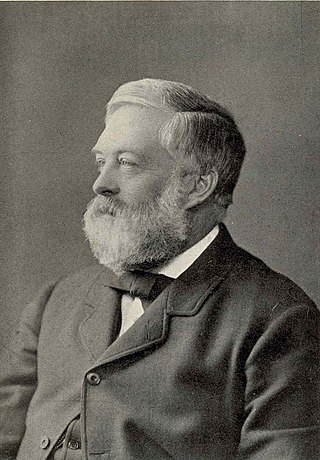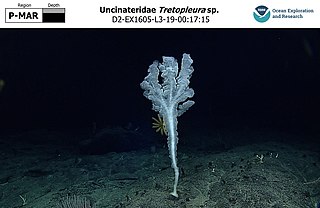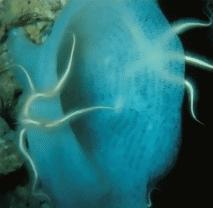
Sir Charles Wyville Thomson was a Scottish natural historian and marine zoologist. He served as the chief scientist on the Challenger expedition; his work there revolutionized oceanography and led to his being knighted.

Max Carl Wilhelm Weber van Bosse or Max Wilhelm Carl Weber was a German-Dutch zoologist and biogeographer.

Lyssacinosida is an order of glass sponges (Hexactinellida) belonging to the subclass Hexasterophora. These sponges can be recognized by their parenchymal spicules usually being unconnected, unlike in other sponges in the subclass where the spicules form a more or less tightly connected skeleton. Lyssacine sponges have existed since the Upper Ordovician, and three families are still alive today. The Venus' flower basket is one of the most well-known and culturally significant of the glass sponges.

Prosena is a genus of flies in the family Tachinidae.

Bolma is a genus of medium to large sea snails with a calcareous operculum, marine gastropod molluscs in the family Turbinidae, the turban snails.

Mattheus Marinus Schepman was a Dutch malacologist. He was one of the foremost collectors of mollusc shells in the Netherlands, and was also high on the overall list of European collectors.

Rossellidae is a family of glass sponges belonging to the order Lyssacinosa. The family has a cosmopolitan distribution and is found at a large range of depths.

Staurocalyptus is a genus of sponge. It was circumscribed in 1897 by Isao Ijima.
Baeriidae is a family of calcareous sponges in the class Calcarea. It was named by Borojevic, Boury-Esnault, and Vacelet in 2000. The type genus is BaeriaMiklucho-Maclay, 1870, by original designation, though Baeria is now considered a junior synonym of LeuconiaGrant, 1833.
Eilhardia is a genus of calcareous sponges in the family Baeriidae. It contains one species, Eilhardia schulzei.

Amphidiscosida is an order of hexactinellids. The Amphidiscosida are commonly regarded as the only living sponges in the subclass Amphidiscophora.
Sceptrulophora is an order of hexactinellid sponges. They are characterized by sceptrules, a type of microsclere with a single straight rod terminating at a bundle of spines or knobs. An anchor- or nail-shaped sceptrule is called a clavule. A fork-shaped sceptrule, ending at a few large tines, is called a scopule. A broom-shaped sceptrule, ending at many small bristles, is called a sarule.

Farreidae is a family of glass sponges in the order Sceptrulophora.

Euretinae is a subfamily of glass sponges in the family Euretidae.

Tretodictyidae is a family of glass sponges in the order Sceptrulophora.
Anomochone is a genus of glass sponges in the family Tretodictyidae.

Aphrocallistidae is a family of hexactinellid sponges in the order Sceptrulophora.

Uncinateridae is a family of glass sponges in the order Sceptrulophora.
Lonchiphora is a genus of glass sponge in the family Farreidae.
Diapleuridae is a family of glass sponges in the order Lychniscosida. The only living species, Scleroplegma lanterna, is endemic to the waters around Cuba and St. Croix in the Caribbean Sea.














